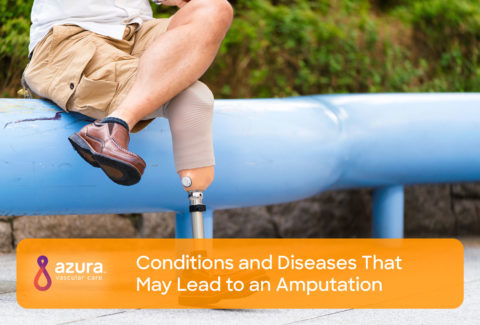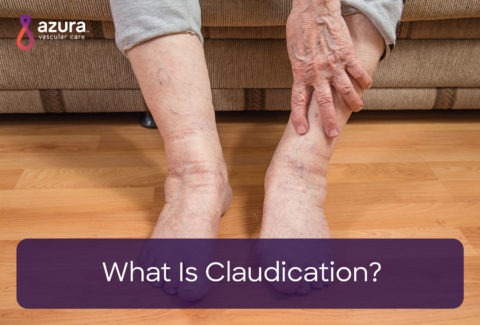
Knowledge is power.
Learn more about the prevalence of peripheral artery disease (PAD), the signs and symptoms, your risk factors and changes you can make to slow progression of this disease, — and avoid amputation due to PAD.
Here are our four most popular blog articles about PAD and amputation that provide education for making treatment decisions that can improve your health and quality of life.
1. Have Non-Healing Diabetic Foot Ulcers? Waiting Too Long Could Lead to PAD and Amputation
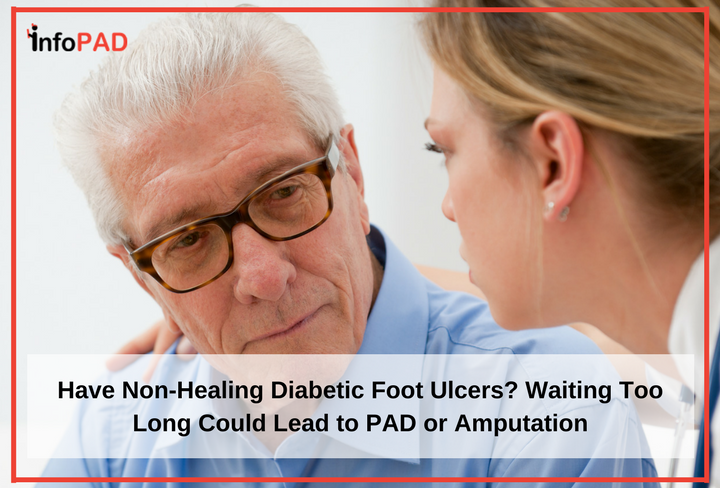
Wounds on the foot or ankle that don’t heal are a leading cause of diabetes-related amputations. They also may be a sign that you have PAD. It’s estimated that 50 percent of people living with diabetes and non-healing foot ulcers also have PAD. Learn how a simple injury or irritation can become a major medical issue, how diabetic neuropathy plays a role, and how waiting can lead to amputation due to PAD.
2. The Unfortunate AND Avoidable Truth About Foot Amputation Due to Diabetes
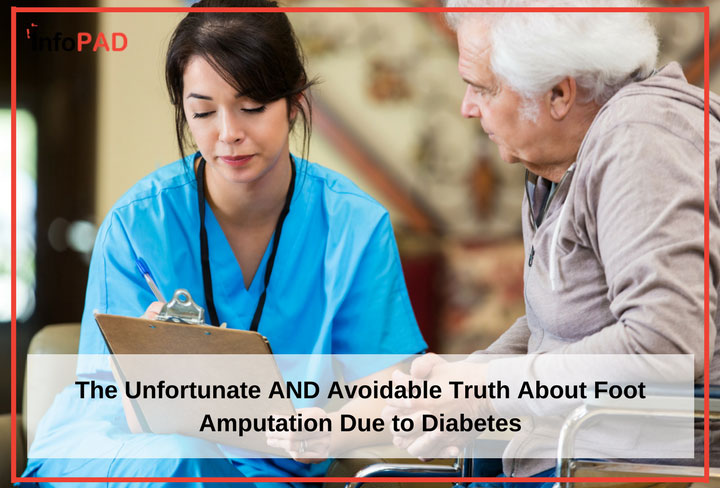
Nearly 73,000 undergo life-changing, lower-limb amputations each year, with most of the amputations due to PAD. Non-healing foot ulcers are caused by high blood glucose levels, which speed up damage to the nerves and blood vessels in the body, specifically the limbs. Soft-tissue infections, osteomyelitis, critical limb ischemia and gangrene can all lead to physically and emotionally devastating amputation surgery. Learn how amputation can be avoided by knowing the symptoms.
3. 25 MUST-KNOW Statistics About Amputation Due to Diabetes
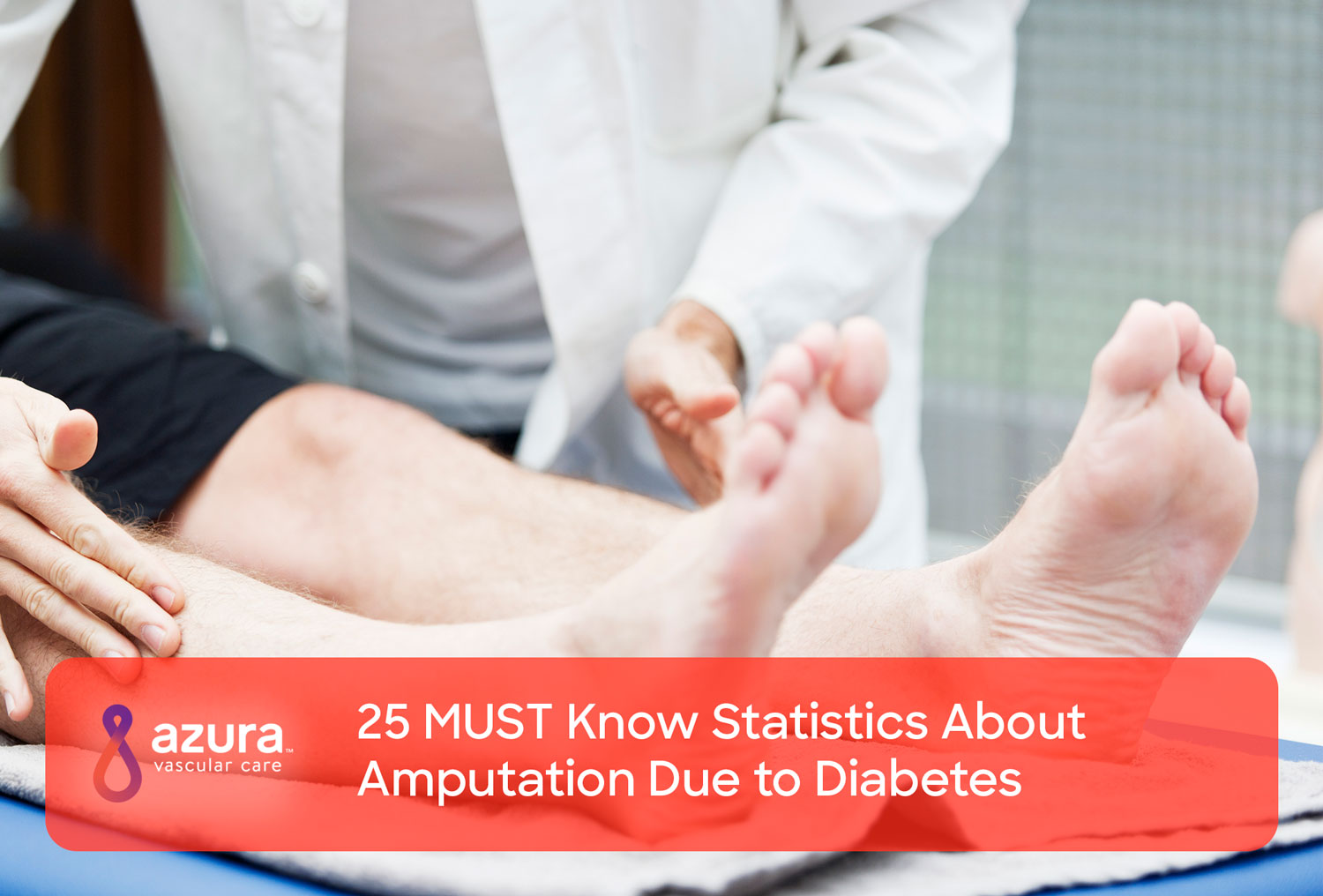
Poor circulation is the common thread among diabetes, PAD and amputation. It’s estimated that worldwide, a leg is amputated every 30 seconds due to diabetes. Diabetics often suffer from foot ulcers, which are difficult to cure in patients who also have PAD. While many of the statistics we’ve found may seem bleak, it’s important to note that timely, comprehensive treatment can save up to 90 percent of limbs from amputation. Learn more important facts about foot ulcers and the link to PAD.
4. April Is Limb Loss Awareness Month

In recognition of “Limb Loss Awareness Month” education on the relationship between vascular disease and amputation is important to note in addition to the fact that amputation due to PAD can be avoided. Did you know that two million Americans have already lost a limb? More than half of those amputations were due to vascular disease and 85 percent of all lower limb amputations were preceded by a foot ulcer.
The numbers are staggering, and those at greatest risk are people with diabetes and/or PAD. Many people with the disease don’t have any symptoms. Those who do notice the signs typically experience muscle cramping and leg pain, which improves with rest. Learn more about the symptoms and if you are at risk so you can avoid amputation due to PAD.
The link between amputations and PAD is irrefutable, but PAD is treatable and amputation due to PAD is avoidable. The articles above outline the statistics you need to know to be more aware about the condition, the signs and symptoms of diabetic foot ulcers and PAD, and the steps you can take to improve your health — today.
Have questions about non-healing sores and PAD? Download our FREE information sheet. Diabetic foot ulcers are serious and can lead to amputation. If you have diabetes and you still haven’t seen a doctor about any sores that you may have, call 844-LEG-DOCS (534-3627) to schedule an appointment with a vascular specialist today.
